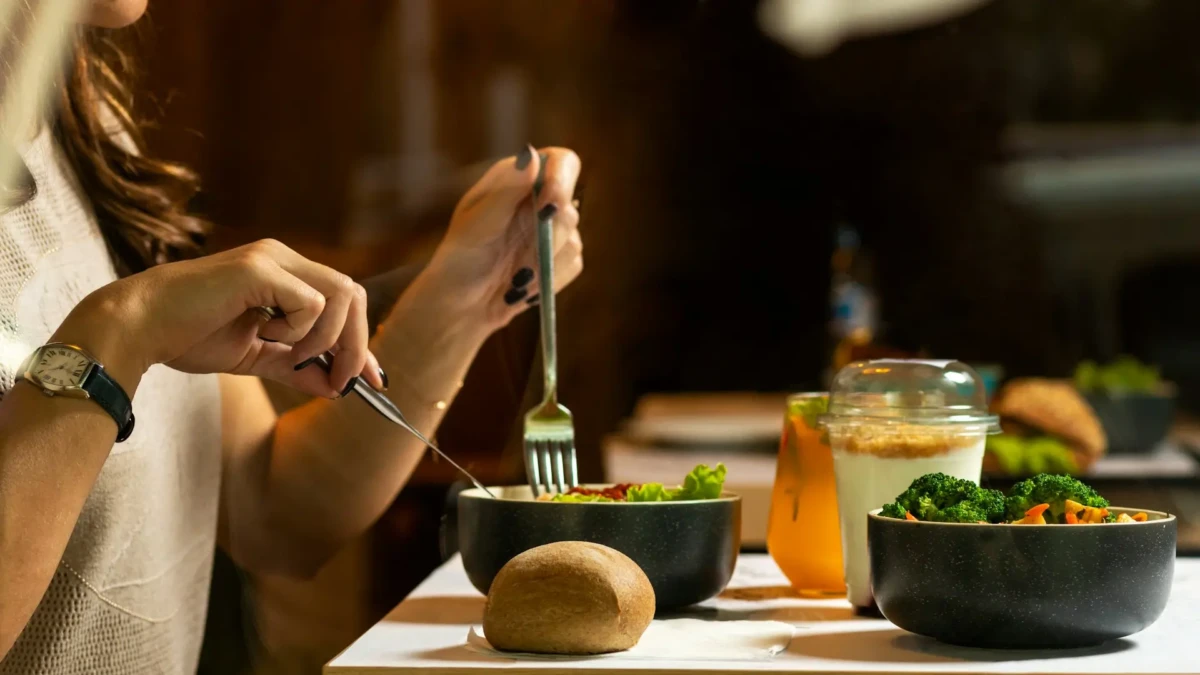Food is meant to support life, yet your relationship with it may feel anything but simple. You might battle the urges to restrict or binge, feel guilty after eating, or believe certain foods define your worth. But food freedom comes not from stricter rules—it comes from understanding emotional patterns and building healthier coping skills. Here’s how recovery supports a shift toward eating without guilt and finding peace in your food choices.
Why guilt enters the picture
When food becomes tangled with survival, shame, control, or emotion, it stops being just nourishment. Many people in recovery say that food felt like the only controllable area of life, while other parts felt chaotic. According to one source, these emotions—including guilt and shame—act as strong barriers in recovery.
Often, you may have labeled foods as “good” or “bad,” or rewarded or punished yourself through eating or not eating. That kind of moral language around food fuels guilt: you eat and feel “wrong,” or you skip and feel “weak.” The cycle reinforces the problem. It shifts the focus from nourishment to self‑judgment.
Recognizing this pattern is the first step toward changing your food relationship. You don’t have to erase every thought at once. Notice when you feel guilt around a meal and ask: What triggered this feeling? Awareness matters.
Understanding the emotional patterns behind your eating
Using food instead of feeling
You might use food as a buffer against unloved emotions—sadness, stress, boredom. Research on emotional eating shows that people often eat in response to emotional triggers rather than physical hunger.
This makes sense: if you’ve felt unsafe, cut off, or unheard, food becomes a substitute for comfort or distraction. The trouble is, it doesn’t heal the underlying emotion—it just postpones it.
The body and mind are relearning trust
If you’ve had disordered eating or cycles of restriction and bingeing, your internal signals of hunger/fullness may be worn out. According to the National Eating Disorders Association (NEDA), recovery means restoring regular eating patterns and learning to trust your body again.
When eating becomes mechanical (scheduled meals, snacks), you begin to rebuild trust. With time, you’ll move toward listening to your body rather than rigid rules.
What eating without guilt looks like
Eating without guilt means you make peace with food choices and recognise they aren’t moral values. It means letting your body ask for food and letting you respond kindly. Here are some markers you’ll notice:
- You have meals and snacks without “cheating” or “making up” for them.
- You recognise hunger and fullness cues and act on them.
- You stop judging yourself harshly after eating.
- Food isn’t the enemy or the reward—it’s the fuel, the comfort, the shared experience.
- You allow variety, even foods once labeled “forbidden,” without guilt.
These changes don’t happen overnight. But with patience and support, your relationship with food evolves from fear or control to trust and nourishment.
How recovery supports the shift
Recovery isn’t only about stopping harmful eating—it’s about rebuilding your emotional toolkit, your body trust, and your support system. Here’s how structured settings help:
Professional guidance
In real recovery settings, you can work with dietitians, therapists, and physicians who guide you through meal planning, managing distress after eating, and addressing the emotional roots of your food behaviour.
Safe environment for change
Immersive recovery settings give you relief from everyday triggers—social pressure, diet culture, shame. You get consistent practice at eating, coping, and restoring your body in a space where the focus stays on healing. For individuals battling addiction as well as disordered eating, facilities like the Addiction Treatment Center offer comprehensive support.
Rebuilding coping skills
If food were your coping skill, you would replace it with healthier tools—journaling, breathing exercises, movement for joy, and connection with others. This supports you when emotions arise instead of turning to food.
For those seeking more private, high-end options, a Luxury Rehab in LA like Peak Path Health offers individualized care in a calm, supportive setting.
How to practice freedom with food now
You don’t need to wait for a treatment centre or an ideal moment. You can start shifting your food relationship today. Here are actionable steps:
- Write down one food rule you’ve believed (for example: “I must never eat dessert”). Ask: How does this rule make me feel? Is it helpful?
- Choose a meal for this week where you eat without saying “good” or “bad” about your food. Notice how you feel during and after.
- After eating, pause. Ask: Did I honour hunger? Did I stop when full? Did I judge myself? If guilt shows up—recognise it, name it (“Here’s guilt”), and let it pass.
- Build a toolbox of non‑food coping strategies: take a walk, talk to a friend, use breathing. Practice one small moment after a meal when urges or self‑criticism arise.
- If you feel stuck, reach out for professional support. A treatment centre gives you structure and tools to rebuild from the ground up.
Final thoughts
Learning to eat without guilt is a process of rediscovery. It means ditching food rules, understanding emotion, and building a healthier life. Recovery gives you the structure, space, and tools to make that shift and trust both your body and your choices. You don’t have to live by guilt, fea,r or control anymore. You can move toward freedom, one meal and one feeling at a time.
